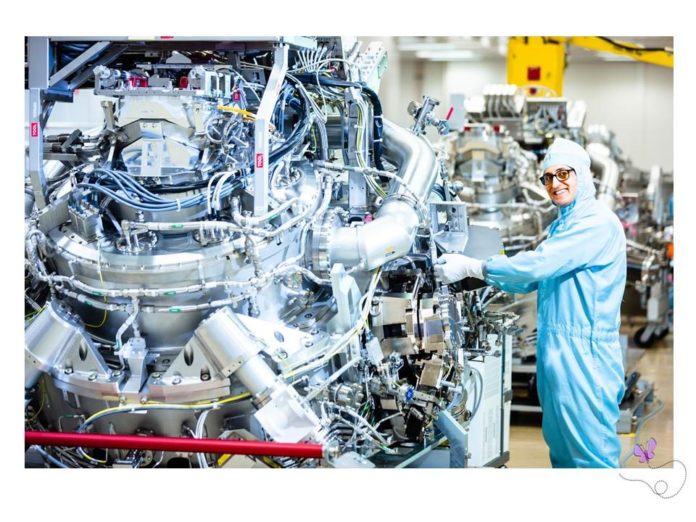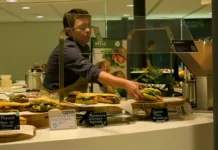How many of us would actually believe that a simple butterfly, fluttering about in forests in Argentina, could have an effect on the weather in the USA? Yes, a crazy thought. But how often do we have seemingly crazy ideas, with colleagues around the coffee machine? Some of which, later having an effect on the company, or even the rest of the world. Not so crazy after all, correct?
Welcome to the chaos theory, a well-established scientific research field. A study on how complex systems are vulnerable to seemingly insignificant factors. Looking back over the last 50 years, we have witnessed so many fundamental technologies vanish into extinction. How many of us remember our 14-inch black and white television sets, with 3 channels, and no remote control, of the 60’s? And yes, what about our dial-tone telephones with fixed lines? It was just a telephone, and nothing else. Some of us smile, when we reply to the puzzled (amusing) questions from our youth of today.
We had fundamental products, a great start, perfectly suited for the times, then. We embraced them, with sheer pride. And we were convinced that we had the latest and best. But that was 50 years ago, and technology is moving, as engineers do not sleep (much). We call this progress, as we continuously leap-frog over the competition, in the pursuit of the better, faster, cheaper, to get ahead. Our experts say it’s a ‘market-driven’ economy, and that we, the consumers, drive this need to enjoy a diversity of new products every few months. This has created a vicious cycle, where companies are forced to run even faster than before, to create new waves of products, continuously. They compete with each other, and themselves, with a burning sense of urgency. Result? Everyone is now forced to reduce their time-to-market, in anticipation to win the race, and secure their financial targets.
Looking back just 5 years ago, we know of companies that made (for example) series of 40,000 light bulbs an hour, every hour, every day, every year, at a steady pace for many years. They were market leaders but knew that times were changing and sensed the new market trends. They had to adapt, they had no choice. Their new challenge would be, to make (perhaps) 40,000 different light bulbs, every hour, day and year instead. And here comes the challenge, if this is even possible? They need to think out of the box. This would turn everything upside-down, breaking many golden rules that brought historical success. This implies a Change Management process, creating a new culture across the entire organisation. A huge change in mindset, steering the company towards a totally different business model. Affecting everyone, at every corner of the company. What is their new goal? The need to make anything, at any time, for any customer, at any factory, anywhere in the world. This courageous step, offers long term gains, but comes also with serious consequences, on price and risks. Is it really worth the risk?
Welcome to the vision embraced by the management at VDL ETG, Eindhoven. This award-winning group, is fully aware of the changing business dynamics for high-level innovation, on the global platform. They understand and are fully engaged with their customers’ urgency, on their ‘need for speed’. According to Cees Bogers, Deputy Managing Director at VDL ETG, “we started our business more than 50 years ago, serving our customers with regular batches of familiar products. We called it, ‘build-to-print’. But we are now pulled upstream into early R&D phases, by our customers. This is new for us, to support our customers, with just preliminary specification sheets, also with the development of new products. We call this now ‘build-to-spec’. We accepted this challenge. And we see this as a wonderful opportunity to grow, and to develop ourselves into the next chapter.”
For the rest of us, non-geeks, we may fail to understand the fuss. And simply ask, what is the problem? Why was it good in the past, and why is it bad now? Well simply said, ‘batch production’ is a geek-term that describes the type of manufacturing process. Imagine making a large batch of cookies, such as 1000 kilograms of many ingredients. This will be processed at one machine, at a time. This could take several hours at the first machine. Then this ‘batch of cookies’ would move over to the next machine, and queue again. The whole production process may take several different machines, working in sequence. The finished cookies will be packed in boxes and loaded in the trucks in bigger boxes. So every step along the way, is made in batches.
So how can we adapt, to make many different cookies, with different recipes, with changing schedules, at the same time, and still make money? Not easy.
This was exactly how parts were made at the production floor, when a piece of metal bar, would go through (possibly) 25 steps at 25 different machines, queuing in batches at every step, to be machined, milled, drilled, cleaned, tested etc. According to Sander Pop, Manager Logistics of the Parts Department at VDL ETG, “batch production is great if the product remains the same, for days and years. But our customers have evolved, their business model has changed. Their designs are changing very fast, and this creates huge diversity. We need to find new ways to get flexible to match this new uncertainty on design and demand. We cannot work strictly only in batch anymore. The way forward would be to embrace the principles of Just-In-Time (JIT) manufacturing. Then we produce only what we need, when we need it, and where we need it. Good news that we have already started revitalising our machines for newer technologies to help us get there. Yes, we are already on the right path forward!”
Engineers are technology geeks, who always seek perfection (yes really). The product designs are never really finished. And as such, at every phase during the product life cycle, they will always have the itch to tweak their product designs. And at VDL ETG, making extremely complex state-of-the-art products, even the slightest change in any component, triggers a domino effect into the whole organisation. These changes ripple through the organisation, affecting the full chain of activities, involving Order Management, Planning, Supply Chain, Logistics, Production, Planning and finally Costing. These seemingly small changes, often take days with additional costs, to implement throughout the organisation. Yes, another form of the Butterfly Effect.
With the decision to support New Product Introduction, there is now a new dimension of additional complexity. Now at VDL, there is a mix of projects running from both, the old and new business streams. This is like hot and cold water, flowing through the same organisation. This is an additional challenge, placed upon the organisation to deliver the final products on-time and within specifications. According to Arno Vogels, Manager Product Data Control/Supply Chain Engineering at VDL ETG, “we are now in the transition phase, moving towards a new way of working, to support the fast innovation cycles from our customers. This is a big challenge, and my team is fully engaged in supporting this vision. It is a great step forward for our company. We will become faster, more flexible and cheaper. This is what our customers want, and this is our new future”.
As “one of the smartest regions in the world”, the business strategy by VDL ETG, is definitely prepared for the future. A bold move for the next chapter, with vision and leadership in midst challenging times, with a clear focus, and driving growth in the region. An ‘echt Brabants bedrijf’, with their patriotic red-white-blue logo, proud winner of “Nederlandse Innovatieprijs 2019” is leading the way forward.
Yes, it’s coming soon, the Butterfly Effect on Innovation, from Eindhoven to the rest of the world. Are you ready?
For Eindhoven News: Aroop Bhattacharjee

















Wow Aroop, such a thought provoking and intelligent read. Thank you.
Dear MD, thank you for positive comment. I only write once every few mnonths, thus my late reply. I am not sure if we know each other ? Please do send me an invitation to LinkedIn, and we can keep in touch. WIth kind regards, Aroop